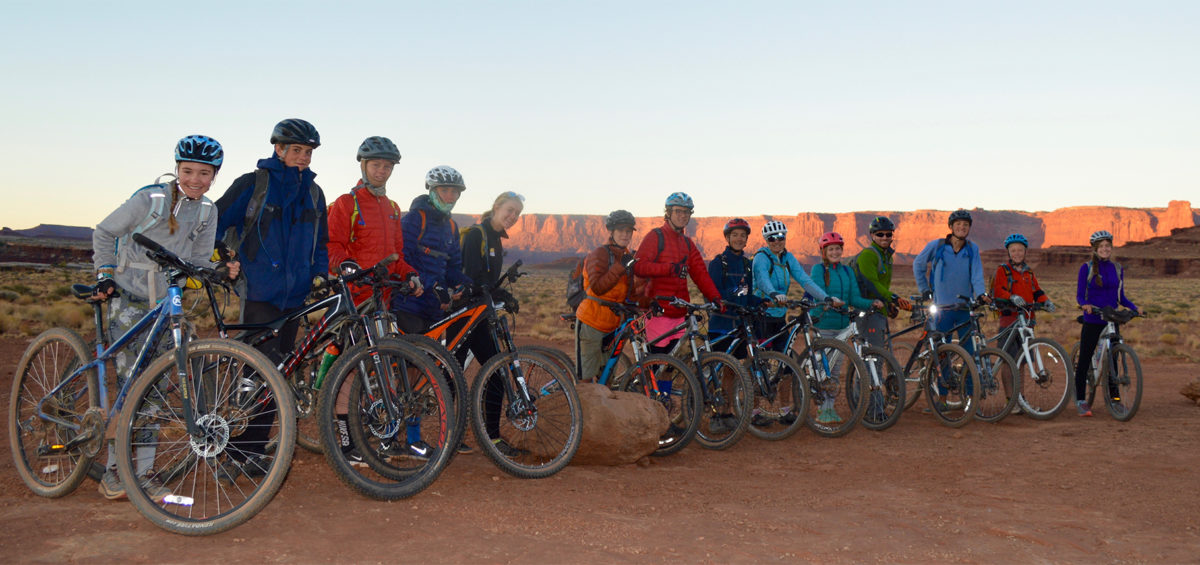Early on Tuesday morning, October 18th, thirteen TMS upper school students woke up at Lone Mesa Campground, twenty miles from the official entrance to Canyonlands National Park. Their task: Ride 105 miles over the next four days through the canyonlands via White Rim trail, exiting through Shafer Canyon.
The posse of students and teachers left Lone Mesa that morning, with 17 bikes, 108 gallons of water, three coolers full of food and two vehicles. This was their supply. The vehicles were for emergency situations and to carry the team’s supplies, but not really for transportation—that is what the bikes were for.
Over the next four days, the Mountain School students would average about 25 miles a day on White Rim road. “Road” however is a generous term for the two-track which at times washes out, turns to deep desert sand, is covered by loose rock, and climbs seemingly impossible routes across the canyon walls. The “road” follows the Green then Colorado River and literally follows the canyon’s rim, which has been colored white by years of geological activity.
This trip is part of the larger Mountain School outdoor education program which every student, in every grade, takes part in beginning in first grade. As the students move through the school, the trips become progressively longer, more challenging, and remote thus allowing students an experience to discover elements of themselves as well as their class.dsc_0084
Trips also allow students to see each other’s different strengths and foster empathy, with the goal of bringing these experiences into their everyday interactions in the classroom. At times, as was the case on White Rim, the very students who excel on a mountain bike may not be the same ones who excel in the classroom.
In the desert, those students have the opportunity to lead, to be the best, and to give their peers the same help and support that they may frequently be on the receiving end of in the classroom. This not only builds confidence in those students, but builds an awareness among all students that everyone has different strengths that should be equally valued.
As students rode the rim, they stopped to reflect, give research presentations about different elements of the canyonlands and recite Edward Abbey, who reminds us that if we truly experience the out of doors, (this doesn’t mean just looking at), but we get out in it, then perhaps we can learn from it.
In Desert Solitaire, he writes, “….walk, better yet crawl, on hands and knees, over the sandstone and through the thornbush and cactus. When traces of blood begin to mark your trail you’ll begin to see something, maybe.”
And, yes, the Mountain School crew left some blood on this trail, along with a few tears, but mostly smiles and laughter. What they took from it however, is more important than what they left.
And this is why thirteen Mountain School students and four teachers traveled the 105 mile journey from Lone Mesa campground to Shafer Rim for a week in mid-October—so that perhaps they would “see something” — then use that “something” to shape who they become.





Leave a Comment